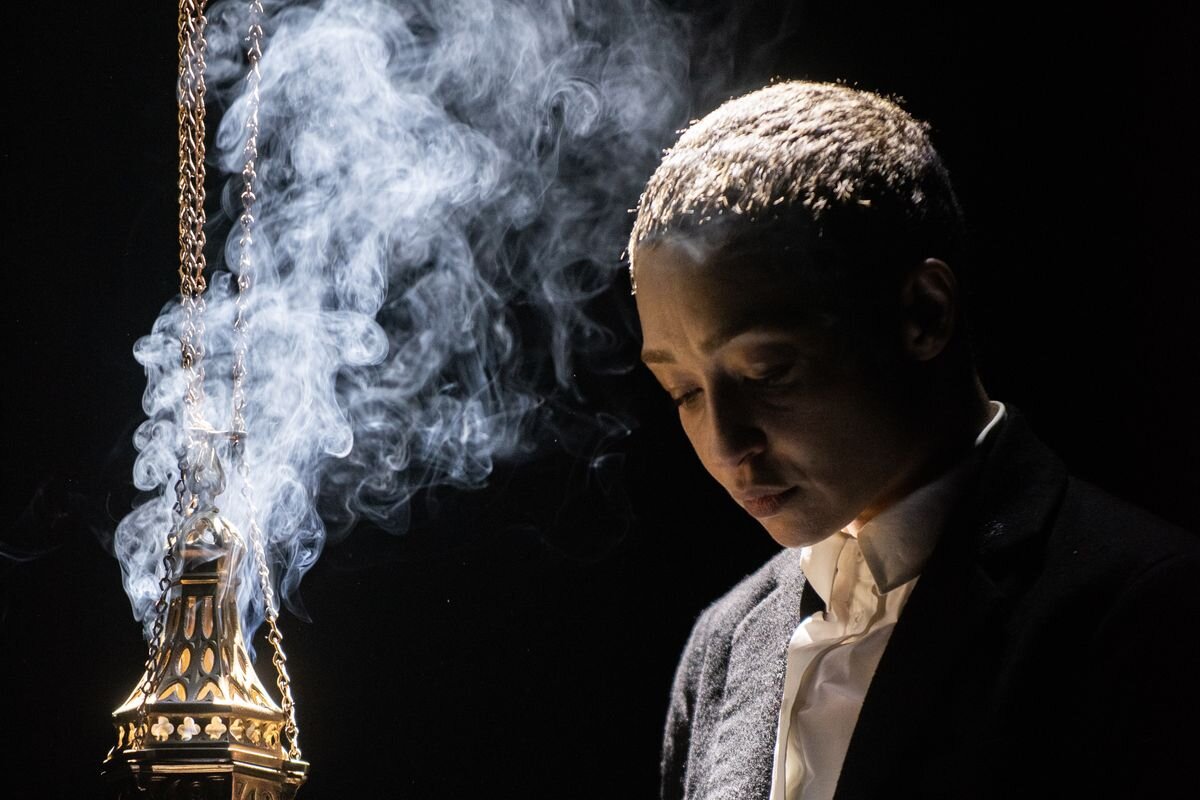Photo courtesy of Teddy Wolff
The stage is set: a dark black box in which a single golden incense lamp hangs, billowing smoke illuminated by white light from above. Slowly, characters come from the wings to mourn the loss of King Hamlet, still body beneath a plastic sheet on a cold, metallic table. In the single spotlight from above, surrounded by darkness on all sides, Hamlet lets out a single, silent scream of agony in loss. The St. Ann’s Warehouse production of “Hamlet” in Brooklyn, starring Academy Award-winning actress Ruth Negga as Prince Hamlet, is a more youthful interpretation of the story, in which Negga wholly encompasses the role of a grieving teenager hell-bent on revenge and answers after losing his father.
Rambunctious is a word that comes to mind when watching Negga flit around the stage, shifting between the somber poise of a seasoned adult to untethered bouts of the grief of an orphaned child. Negga exhibits Hamlet’s juvenile behavior largely through movement, as the character moves in the wild, theatrical and over-dramatic way that children are so fond of. Best known for her performance in the film “Loving” (2016), which earned her nominations for an Academy Award for Best Actress, a Golden Globe for Best Actress and the BAFTA Rising Star Award, Negga’s American theatre debut in her portrayal of Hamlet is a fresh take on the tragedy. Her androgynous, youthful portrayal makes her a force to be reckoned with on stage: an isolated, seemingly-maddening young man who will stop at nothing for answers.
The performance utilizes a stage surrounded by black doors through which the actors move between scenes, among other fully immersive aspects of the set, such as actual rain thundering down from the rafters and dirt being flung across the stage to dig Ophelia’s grave beneath the stage floorboards. A more modernized interpretation of the original tragedy, the set is cold and still with the implications of murder and the modern age. Bodies lay on metal gurneys, with King Claudius adorned in an army uniform stippled with medals and his 1940’s housewife-esque Queen Gertrude by his side.
Especially impactful in the production is Aoife Duffin’s portrayal of Ophelia’s gradual descent into madness, paralleled with Hamlet’s rise to revenge. Clad in a thin white dress and soaked through with her hair dripping and flowers clutched desperately in her small white hand, Duffin’s Ophelia was painfully real, fully conveying her beauty while never shying away from the full tragedy of her situation. As the story progresses and Hamlet gains more enemies while Ophelia loses more of her stability, the haunting song of the gravediggers echoes from within the frames of the black doors, beckoning both Hamlet’s victims and later Ophelia and Hamlet themselves to join King Hamlet beyond the veil. The “veil,” the brainchild of set designer Susan Hilferty (“Wicked”), is a sheet of fine, thin and near-opaque plastic that creates the illusion of billowing smoke, used to blur the deceased characters as they move within the real world.
The St. Ann Warehouse’s performance of “Hamlet” shows that while something may be rotten in the state of Denmark, this Brooklyn-based take on the Shakespeare classic is nothing if not spectacular. As each character gradually falls dead on stage, they gather behind the theater’s “veil” standing stoic and solid after Hamlet’s final line, “The rest is silence.” The characters then place their hands against the screen, almost calling for the audience to join them before the theater is submerged into complete darkness, signaling the finality and totality of death within the story, and by extension, within life.







